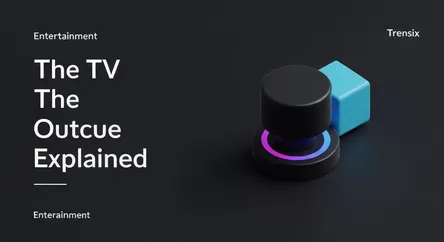Entertainment
The TV Outcue Explained

Ever wonder how TV anchors know when a report is ending? Discover the 'outcue,' the crucial verbal signal used in broadcasting for smooth transitions.
What is an Outcue?
An outcue is a technical term in television and radio broadcasting for the last few words spoken by a correspondent at the end of a pre-recorded or live report. It serves as a crucial signal to the director and technical crew in the control room. This verbal cue indicates that the segment is concluding, allowing them to precisely time the transition back to the studio anchor, roll the next video package, or switch to a commercial break. A classic example is a news reporter signing off with their name and location, such as, "...reporting from the White House, John Smith, Network News."
Why is it trending?
The term 'outcue' is gaining visibility as audiences become more interested in the behind-the-scenes mechanics of media production. The rise of social media platforms, where news bloopers and on-air production gaffes are often shared, has exposed viewers to the technical language of broadcasting. This fascination with how shows are made makes once-obscure industry terms like 'outcue' a point of curiosity, offering a glimpse into the intricate coordination required to produce a seamless live television show.
How does it affect people?
For the average viewer, a successful outcue is completely unnoticeable—it's the foundation of a smooth, professional broadcast. Its effect is felt only when it fails. A missed or fumbled outcue can lead to awkward on-air silence, a director talking over a reporter, or a clumsy transition that breaks the viewer's immersion. It reminds the audience of the complex human and technical orchestration behind the program. For professionals in the industry, the outcue is a fundamental and indispensable tool for maintaining the pace and flow of a broadcast.